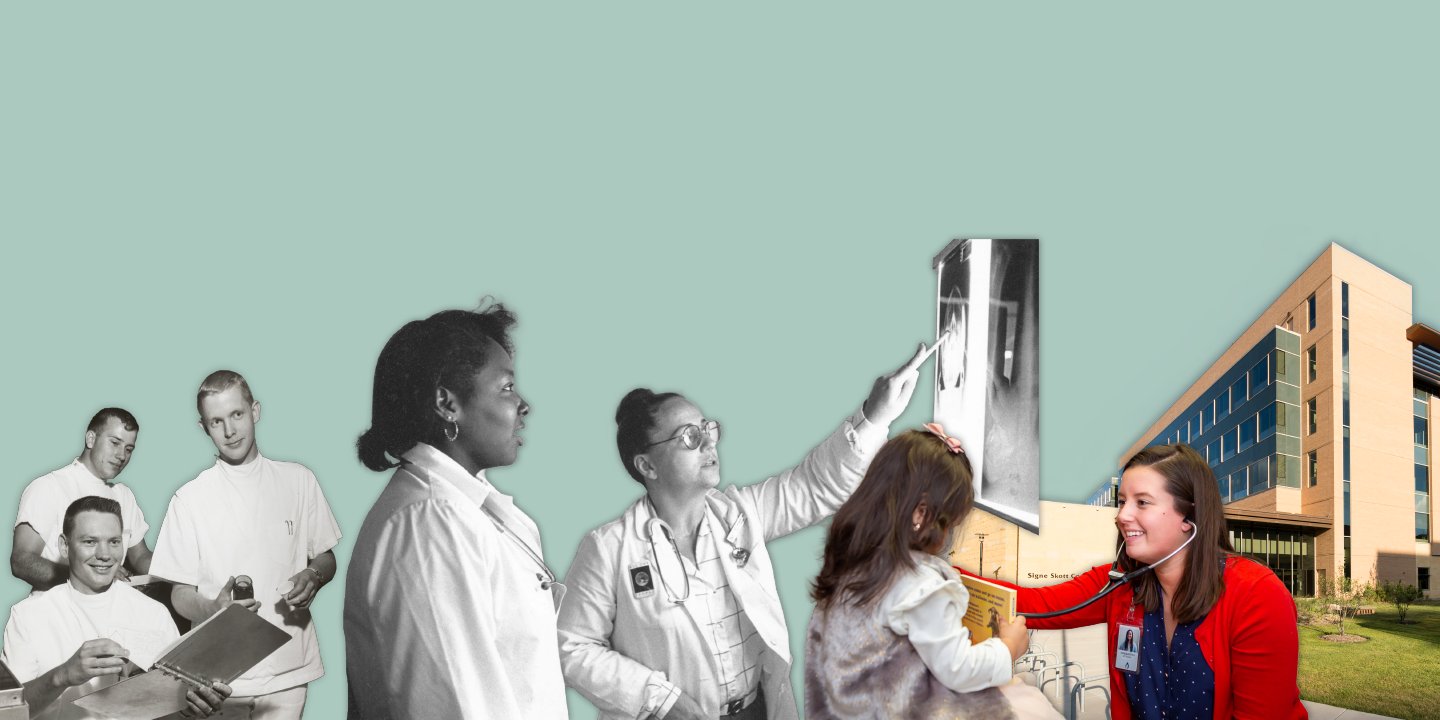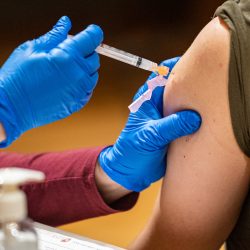
Nursing by the Numbers
Badger graduates have provided a century of care and innovation to patients around the world.
Snapshot of 2023’s Incoming Bachelor of Science in Nursing Class
Number of applicants: 333
Number enrolled: 162
Percent who are first-generation students: 25
Percent who are female: 84.5
Percent who are male: 13.5
Percent who are transgender or gender not specified: 2
Youngest: 19
Oldest: 60
Percent who are Wisconsin residents: 67
Percent who are white: 70
Asian: 16.6; Hispanic/Latino: 11.7; Black: 5.5; American Indian: 3.7 *
*Students may be counted in more than one category
The field of nursing is regarded as a science and a serious academic pursuit, but that wasn’t always the case.
When the UW began offering nurses’ training in the 1920s, the program’s director, Helen Denne Schulte, faced an uphill battle. A previous attempt at a program had closed during its first semester, and she encountered skepticism from UW president Edward Birge that parents would find enrolling their daughters a worthwhile investment. He assured her that there was “no money” for the program. Beyond that, Denne Schulte had a hard time convincing faculty that it was worth their time to teach nursing classes. But she persisted, and in 1924, the University of Wisconsin launched one of the earliest public nursing programs in the country.
When the first 11 graduates crossed the stage three years later, they earned nursing certificates, which also included a bachelor of science degree in hygiene. Today, the approach to academics has changed, with a greater emphasis on graduate degrees, distance learning, accelerated degrees, innovation, and research, which forms the scientific basis for professional nursing practice. Along with striving to alleviate the shortage of nurses, nursing instructors, and nursing researchers, the UW School of Nursing is focused on addressing disparities in health care and helping to create a more diverse nursing workforce.
The school has been an early adopter of technology, offering its first televised classes in 1963 and its first internet course in 1997. The school’s current home, Signe Scott Cooper Hall, opened in 2014 and includes state-of-the-art patient simulation labs; 25 research suites; and exercise, outdoor, and wellness areas for students. Its high-tech classrooms and flexible layout were designed to allow the school to adapt easily as health care advances and evolving public health scenarios reconfigure the needs of the nursing profession.
The following figures suggest the impact the School of Nursing has on the world today.
> 60%
Number of graduates who went on to find jobs in Wisconsin
21
Number of funded research projects in 2022–23
17
Number of countries with UW School of Nursing graduates
10,923
Number of living nursing alumni
98.6%
Graduation rate (also the average body temperature of an adult)
48
Number of published journal articles by the school’s tenure-track researchers in the 2023 academic year
3 million+
Number of nurses in the United States (Bureau of Labor Statistics)
50
Number of states with UW nursing graduates (plus Washington, DC)
$82,750
Average salary for registered nurses nationally in 2023 (Bureau of Labor Statistics)
7
Number of current faculty whose research focus includes health disparities
6%
Projected growth in nursing jobs between 2022 and 2023 — higher than all other professions (Bureau of Labor Statistics)
12
Number of months for students who already have a bachelor’s degree to obtain a bachelor’s degree in nursing through the accelerated program
3
Pathways to a bachelor’s degree: the traditional program, the accelerated program, and a bachelor of science in nursing completion program (BSN@Home)
1
Rated the most honest and ethical profession in the United States, followed by doctors, pharmacists, high school teachers, and police officers (2020 Gallup poll)
6
Signature research areas: aging and care for older adults; children, families, and reproductive health; health equity; health systems and public health; mental health and substance abuse; symptom science and palliative care
16
National ranking among 657 bachelor of science in nursing programs; 10th among public schools (U.S. News & World Report rankings)
1,000+
Number of students enrolled annually as of 2023
Niki Denison is coeditor of On Wisconsin.
Published in the Spring 2024 issue



Comments
No comments posted yet.